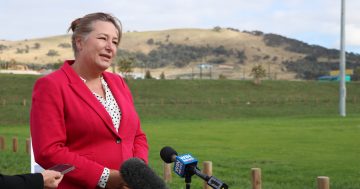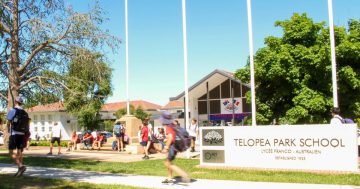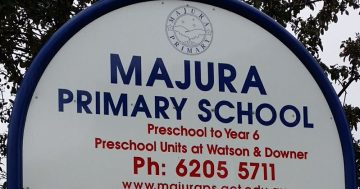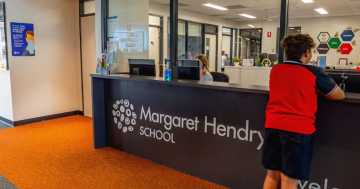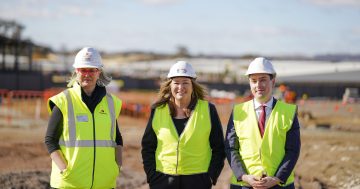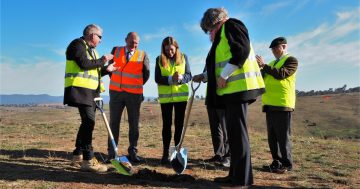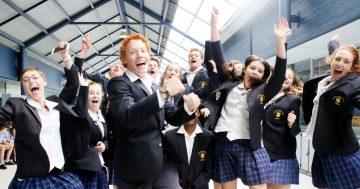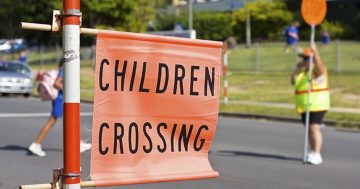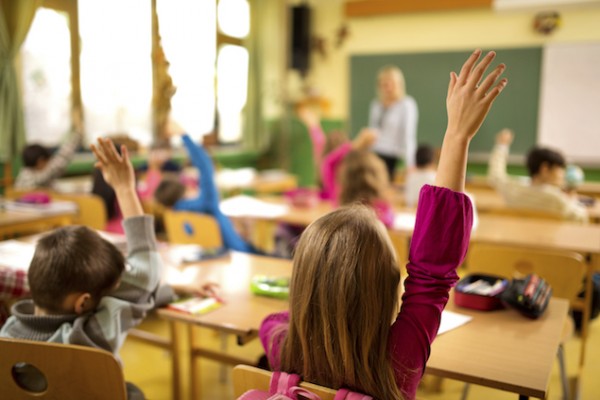
School enrolments are unevenly spread in some areas of Canberra.
The latest ACT school census reflects the demographic changes that the Territory has been going through but also the familiar Canberra practice of parents shopping around for the best education, with clusters of high enrolments around schools perceived to offer better programs than those nearby.
It also shows non-government school enrolments have remained relatively steady over the past four years, while the number of government school students has grown by 13 per cent over the same period, particularly in the primary and high schools.
In February when the census was taken, there were 77,115 students enrolled in ACT public and non-government schools, an increase of 1,707 students (2.3 per cent) since February 2017. From February 2014 to February 2018, enrolments increased by 6555 students (9.3 per cent).
Government school enrolments in 2014 were 42,211 and are now 47,945. Primary school enrolments have surged over the past four years, from 21,429 to 25,570, while high school numbers have risen from 9841 to 11,062. College numbers have also gone up, from 6258 to 6524.
Non-government enrolments were 28,349 in 2014 and are now only marginally stronger at 29,170. In fact, in the high school and college sectors, traditionally strong areas for Independent and Catholic schools, enrolments have dipped slightly.
For the first time, the capacity figures have been included, revealing an uneven spread of enrolments.
This reflects population changes but also the fact that many parents send their children out of area to schools that are perceived to have a better reputation for particular programs such as music or languages. It poses the question whether the ACT education authorities will eventually have to force parents to send their children to the school in their local area to spread enrolments more evenly.
The directorate has reaffirmed no child can be turned away from their local school.
Tuggeranong, with its ageing population, has taken the biggest hit in enrolments, recording 18 per cent of public primary school enrolments, with significant under capacity in some schools. For public high schools, it garnered only 14 per cent, and colleges 17.7 per cent.
Unsurprisingly, the north of Canberra, with the booming suburbs of Gungahlin, took the lion’s share of public primary enrolments (30.4 per cent), followed by Belconnen (26.2 per cent) and South/Weston (25.2 per cent).
The north also had the highest proportion of public high school enrolments at 34.4 per cent, but South/Weston, with its prestige schools of Telopea Park and Alfred Deakin, was close behind at 29.5 per cent, followed by Belconnen (21.9 per cent).
In the college sector, South/Weston (32.5 per cent), with high-achieving Narrabundah College and the increasingly popular Canberra College in Phillip, ranked highest, followed by North/Gungahlin (31.0 per cent), Belconnen (18.9 per cent) and Tuggeranong (17.7 per cent).
The census reveals many schools in Tuggeranong are seriously under capacity. Wanniassa School, a combined primary/high school has capacity of 1153 but only 266 primary students and 190 high school students. The relatively new Namadgi School in Kambah, also a combined campus, has a capacity of 1240, but 464 primary students and only 246 high school students.
In South/Weston – that takes in the Inner South, Woden Valley and Weston Creek, where the Government closed several schools – most primary schools are nearly full. Red Hill, with a capacity of 700, has 725 students, many of whom would be from out of area.
In Belconnen, several primary schools (Hawker, Fraser and Miles Franklin) are over capacity and Aranda and Kaleen are practically full, while others such as Charnwood-Dunlop, Evatt, Mcgregor and Maribyrnong are struggling for enrolments.
Also struggling is University of Canberra High Kaleen, which is at half capacity with 340 students, showing how many students in Canberra will move out of their local area for high school and college.
In the inner north, Campbell Primary is at half capacity while other schools are holding their own. Yet, Campbell High, with a capacity of 868, has 719 students. Lyneham High is over capacity with 1119 students, reflecting the popularity of its specialist programs.
Despite the nearly full primary schools in Weston Creek, Mt Stromlo High, with a capacity of 1113, only has a student cohort of 661. The area’s demographics have changed but it is also a victim of out-of-area enrolments and parents choosing non-government schools.
In the growth areas of Gungahlin and the Molonglo Valley, schools such as Charles Weston in Coombs are well under capacity in anticipation of enrolments to come.
Among the public colleges, Hawker, with 482 students and a capacity of 890, and Erindale (438/1015) are struggling for enrolments.
The ACT school census can be found here.











